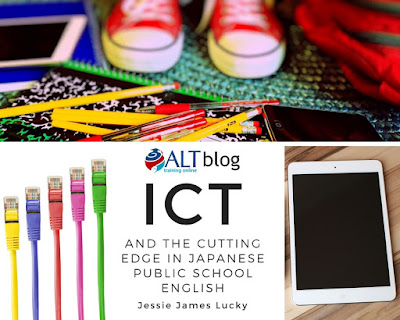This is the third part of a three part series.
Be sure to check out part one – What is Kenshu? Teacher Training in Japan and part two – Kenshu for Me: My First Few Years in Japan
Bio: Jessie is an ALT from Portland, Oregon, USA. He got a certificate in TESL from Portland State University and worked as an adult educator as well as technical trainer for a national bank in the US before coming to Japan.
Jessie has lived in Japan for over 14 years and currently spends most of his time working at two schools in the Kumamoto area. He has a wealth of teaching experience. Outside of school, he teaches students of all ages and levels. More recently, he’s been teaching business English for working professionals, students facing entrance exams or TOIEC tests, students preparing for work and study abroad, as well as community English classes for senior citizens and young kids.
Outside of the classroom, Jessie has a lot of hobbies. These include Capoeira, canyoning, waterfall climbing, instrument making, and heavy metal to name a few.
In my last ‘kenshu’ we were exploring the use of ICT (information and communication technology) and did an English Lesson using it. As I discussed in my earlier posts, no other ALTs were invited to or participated in this training or the meetings that were related to it. Although all the Japanese teachers of every subject, including English, did.
I was the only foreigner invited, and probably only because I was in the actual lesson. As I said in my previous post, I was barely listed on the lesson plan and as you might expect awkwardly included in the post-lesson meeting Q&A. I did not participate in many of the pre-lesson meetings, although I was invited by my teacher to most of them. In some cases, we agreed it was better I wasn’t there for different reasons.
The town that I work for has elected to take an early lead in ICT implementation in Japanese public schools G1-9 (elementary and junior high school). We have tablets in every classroom, digital textbooks, touch screen projectors and network access in every classroom. We have added this technology just over the last few years. Our job was to include this technology in our lesson and it went fantastic in my opinion.
We have tablets in every classroom, digital textbooks, touch screen projectors and network access in every classroom.
It is my belief after participating in this kenshu that ICT will spread to G1-9 public schools all across Japan over the next 5 to 10 years. One of the biggest issues is not, in fact, acquiring the hardware or software. One of the biggest obstacles is training the teachers in its use and keeping them motivated to use it.
ICT is kinda like the ALT acronym, except that it doesn’t get bored if you forget it’s there, it just collects dust. ICT will be a great tool for ALTs too…but we are unlikely to be trained in it along with our Japanese counterparts. We are unlikely to be invited to their kenshu for ICT. If you are an ALT do yourself a favor and try to get invited.
One of the biggest issues is not, in fact, acquiring the hardware or software. One of the biggest obstacles is training the teachers in its use and keeping them motivated to use it.
Even if you are computer literate you will face some difficulties using ICT in your lessons if your Japanese counterpart is not competent or willing. In this case, your understanding of Japanese culture and ability to help your fellow teachers understand and utilize ICT will be of utmost importance.
Our schools use ICT support specialists. We found in our research that such specialists are of critical importance. It’s not enough to give the schools hardware and software, they need to know how to use them. It’s not enough to just train them, they need ongoing help and support.
We found in our research that such specialists are of critical importance. It’s not enough to give the schools hardware and software, they need to know how to use them.
The on-site staff that comes to the school at least once a week really ensures that teachers can and will continue to use the technology. These people probably won’t speak English, so if you want to use ICT it will be helpful to speak as much Japanese as possible so that you can communicate with these individuals to navigate the specific hardware and software available to you. At the very least a good relationship with your JTE who can work with the ICT specialists on your behalf and bridge the communication gap for you will be necessary. (Easier said than done, I know.)
Some things you can do with ICT if/when you get it in your school
This is in no way meant to be an exhaustive list, but rather a quick list of things I have done and am doing personally using the ICT that is available to me.
#1 Copy yourself
You no longer need to go to class just to pronounce things for people. You can record it and they can watch that.
Today’s tablets and cell phones almost universally come with mics and cameras. You can record anything, anywhere, any time.
File sizes, formats etc. are an issue. As time progresses these issues will be more easily overcome. ICT support specialists can also help.
#2 Record your students
Never have time to talk to each student individually or listen to all their presentations? This is where ICT can help.
The Japanese school day can be hectic and difficult to schedule one-on-one encounters with students and teachers. I’m having some students at schools I’m not at that day record their tests and speeches and I evaluate them later in my off-time.
It’s like written homework that they do on their time and you mark on yours, except its done with an audio-visual piece and focusing on listening/speaking skills.
#3 Have your students record and watch themselves
Many kids are much more interested in making a recording than standing in front of people. Kids that will shut down in front of the class will smile, laugh and put all their effort into a video, especially if their friend is holding the tablet for them while giving them cues.
I honestly found it amazing to watch. They really like recording themselves. They can also re-watch their own videos, watch their friends’ videos etc.
Like anything else, not all kids are the same. Some will be shy and not want to do it. Over time, they will get used to it. Novelty and dislike will both wear off and it will become a routine, but useful, tool for spoken language practice.
#4 Use Powerpoint and other multi-media presentation software
You can get all dirty writing with markers and chalk. You’ll also bore the kids with a very two-dimensional visual experience (unless you can draw well with chalk, but it’s time consuming). You can use ICT to create and present colorful, engaging audio-visual slides, songs, videos etc. to go with whatever you are teaching.
ICT presentations take time to make, but once you’ve made them, they are faster and easier to use than chalk or just standing and using your voice box alone. In the long run, they are easier and require less of your effort and time to create a higher quality lesson.
#5 Present student work
As the hardware becomes available students can use their own tablets and/or you can use a projector to show the students their peers’ work. You can also use this to show your own work when going over the answers to tests and quizzes or to give examples of more creative writing tasks.
You just need a projector or screen large enough for everyone to see and the tech to take a picture of the students’ writing/tablets for them to write directly into. If you have a tablet and the kids don’t, you could use your tablet to take and send the picture to the device which is feeding into the projector.
#6 Drilling software
There is a wide plethora of free and at-cost software for drilling English. My school purchased some and the kids use it. There are also free sites online. You can find links to some of them here on this website in the following link —
#7 Digital textbooks
You can use materials to present to the class which correlate directly with their textbooks if the school acquires the digital rights. It is also possible, if the students have tablets, for them to look at the textbooks for themselves and go through some of the activities including audio-elements that are not possible with the paper text.
#8 Quiz games
You can create a quiz game using tablets where the students write their answers and they are projected on the board in a game-show format. You can even do wagers etc. Jeopardy style. The kids love it, its fun, and you can focus on written English, grammar, culture, listening etc. as you see fit. It’s adjustable for all levels.
This is the third part of a three part series.
Be sure to check out part one – What is Kenshu? Teacher Training in Japan and part two – Kenshu for Me: My First Few Years in Japan
Don’t have any ideas? We have a list of topics to write about that need a writer. Email in your interest to write and we can set you up.
For upcoming blogs see the blogs tab here: http://www.alttrainingonline.com/blog.html



Where is the drilling software link?